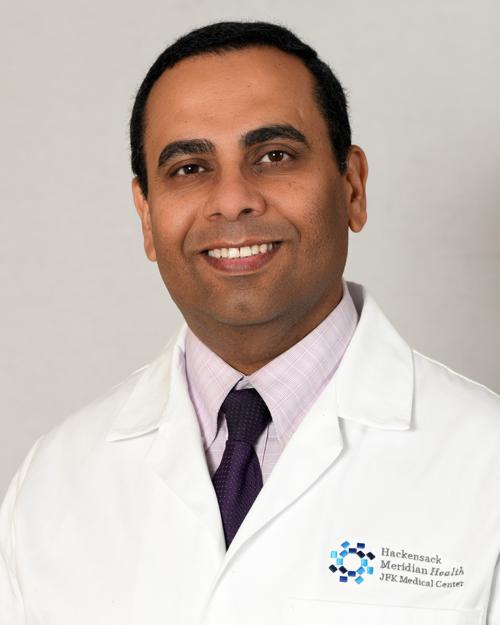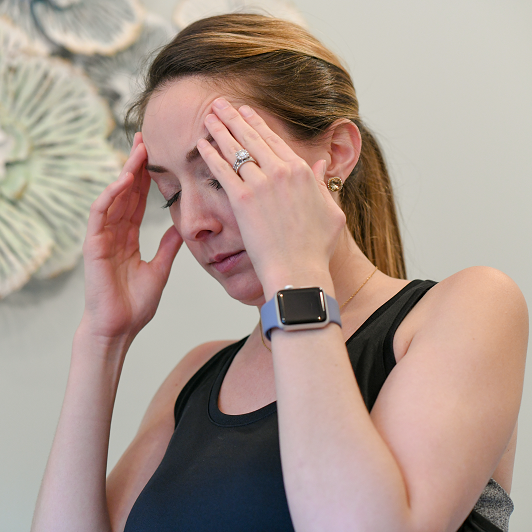What’s Causing My Headache and Is It Serious?

June 26, 2025
If you’ve ever rubbed your temples seeking relief from a headache, you’re not alone. Roughly 50% of people experience headaches, a common issue that has to do with your nerves and brain.
While most headaches are a minor discomfort, some can be severe and make it hard to function. Emad R. Noor, M.D., a neurologist and headache specialist at the Neuroscience Institute at JFK University Medical Center, explains the types of headaches, symptoms and when you should seek medical advice.
What Causes Headaches?
Although your brain may feel like the source of your headache, it doesn’t register pain the way other parts of the body, like muscles, joints and skin, do. The brain tissue itself doesn't feel pain due to a lack of pain receptors in the brain cells, but the structures surrounding it, such as the meninges and blood vessels, do have pain receptors and can be sources of headache pain.
Lots of things can cause headaches, like stress or even being sick. There are two types of headaches: primary and secondary.
Primary headaches, such as migraines and tension-type headaches, originate within the head and are not caused by another condition.
Migraines are thought to be related to changes in brain chemicals and nerve pathways, while tension-type headaches are typically associated with muscle tension in the head and neck.
Secondary headaches are symptoms of something else, like a cold or an underlying disease or condition. While some serious illnesses, like brain tumors, can also cause headaches, those are much less common.
Types of Primary Headaches
Common types of primary headaches include:
Tension headaches
These headaches feel like dull pressure around the head. They are often related to stress or muscle tension. Excessive digital screen time can also cause them.
Migraines
These intense, throbbing headaches usually occur on one side of the head. Some people experience sensory issues, like ringing in the ears or vision changes, called auras, just before a migraine starts. Migraines can also cause nausea and vomiting, as well as sensitivity to light and sound.
Less common types of primary headaches include:
Cluster headaches
These involve excruciating, short bursts of pain around one eye, often accompanied by tearing, nasal congestion and restlessness. They happen in clusters, meaning multiple attacks happen over a period of days or weeks, followed by periods of remission.
Paroxysmal hemicrania
“These are similar to cluster headaches, but the pain is shorter-lasting and more frequent, occurring multiple times a day. They also respond very well to a specific medication called indomethacin,” Dr. Noor adds.
Causes of Secondary Headaches
Secondary headaches are symptoms of underlying medical conditions or diseases, such as:
- Infections: Like sinus infections, ear infections, the flu, COVID-19 or more serious infections like meningitis.
- Blood vessel problems: These include strokes, bleeding in the brain, inflammation of arteries in the head (giant cell arteritis), bleeding around the brain and blood clots in the brain. High blood pressure can also trigger headaches.
- Other conditions: These include head injuries, overuse of pain medications, brain tumors (though these are less common), carbon monoxide poisoning, glaucoma (eye pressure), problems with the jaw joint (TMJ) and sleep apnea. Severe facial pain from trigeminal neuralgia can also be mistaken for a headache.
How Can I Manage and Prevent Headaches?
"The key to headache treatment is to start early and avoid overusing medications," says Dr. Noor. "Everyone responds differently to treatment, so it's important to find what works best for you."
Managing headaches often involves a combination of lifestyle changes and medical therapies, such as:
- Medication: Over-the-counter pain relievers such as ibuprofen or acetaminophen can help with mild to moderate headaches. Prescription medications like triptans, a type of drug that helps regulate overactive pain nerves, treat migraines once they’ve started. CGRP inhibitors, a relatively new type of prescription drug, can help prevent migraines by blocking a substance in the blood that makes headaches more painful and longer-lasting.
- Lifestyle changes: Regular exercise, staying hydrated, a balanced diet, and stress management techniques (like yoga or meditation) can help prevent headaches.
- Avoiding triggers: Identifying and avoiding personal headache triggers, such as certain foods, lack of sleep, or excessive screen time, can also help.
Should I Be Concerned About My Headaches?
Not all headaches are a cause for concern. Primary headaches, although they can be very painful, are typically not emergencies. However, if a headache comes with any of the following symptoms, seek medical care immediately as they could be signs of more serious conditions such as a stroke, brain tumor or other neurological disorder:
- Sudden onset: A headache that starts suddenly and is extremely severe.
- Neurological symptoms:A headache that is accompanied by changes in vision, speech, or coordination..
- Age: New headaches starting after age 50.
- Persistent symptoms: Headaches that worsen over time or change in pattern.
Headaches can be simply annoying or seriously painful, but there are ways to find relief. Dr. Noor recommends talking to your health care provider about any headaches you experience to find out how to manage and possibly prevent them.
Next Steps & Resources:
- Meet our source: Emad R. Noor, M.D
- To make an appointment with a neurologist near you, call 800-822-8905 or visit our website.
- Learn more about neurology at Hackensack Meridian Health.
The material provided through HealthU is intended to be used as general information only and should not replace the advice of your physician. Always consult your physician for individual care.







